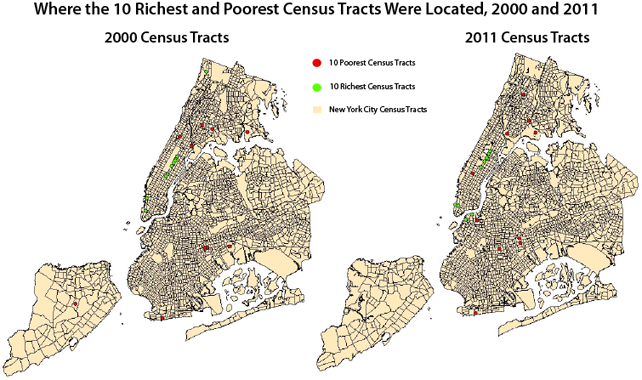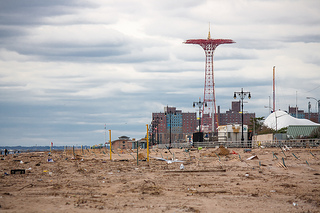Posted by Doug Turetsky, October 3, 2013
The next phase of the Hudson Yards project is beginning to take shape as approvals get underway that will allow the rise of an 80-story office building known as North Tower. But the project’s cost to the city may be rising as well.
On October 10, the New York City Industrial Development Agency plans to hold a public hearing on the proposed tax breaks for the next phase of the project. Since the Hudson Yards plan was first approved in 2005, references to tax abatements focused predominately on the need to spur the office development component of the office, residential, and retail project. Now it appears that in addition to the 20-year tax breaks for the North Tower, the IDA is also set to award a 20-year tax break to the 1.1 million square foot shopping mall to be constructed with an entrance into the new tower.
The Industrial Development Agency estimates the tax abatement for the North Tower and mall will be worth $328 million (in today’s dollars). The value of the tax break for the tower is not separated from that of the mall by the agency since it is being treated as a single entity rather than two distinct developments.
The North Tower and mall will together total 3.8 million square feet, a little more than twice the square footage of the South Tower that is already under construction by Related Companies. Yet the IDA estimated the tax break for the South Tower is worth $106 million—just a third as much as for the North Tower and shopping mall. The rent the mall can command from retailers makes it especially valuable and is apparently driving the difference in the size of the property tax breaks between the two sites.
Providing a property tax abatement for the mall means the city will need to pump more money than previously expected into Hudson Yards to meet the development’s debt service obligations. It also undercuts a shift in city policy away from showering retail projects with tax breaks.
When the Industrial Development Agency, which is administered by the quasi-public Economic Development Corporation, announced its plan for making tax incentives available to spur construction at Hudson Yards, the discussion focused on making the construction of new office space more affordable. Residential and retail components of the Hudson Yards plan were ancillary.
Interim IDA Chairman Joshua J. Sirefman stated in an August 2006 press release describing the agency’s guidelines for awarding tax breaks at Hudson Yards: “The UTEP [Uniform Tax Exemption Policy] amendment provides the framework for financial assistance to overcome the high cost barrier to development that will enable the city to capture demand for new Class A office space and will fuel the continued growth of the city’s economy.”’
The Bloomberg Administration sought to lessen the use of property tax breaks for retail projects with the revamping of the city’s Industrial and Commercial Incentive Program in 2008. But the Industrial Development Agency has substantial leeway to provide tax breaks to the mall if the agency sees fit.
Under the tax exemption policy for Hudson Yards approved by the IDA’s Board of Directors, the mall can qualify for tax abatements if it’s of sufficient size (at least 1 million square feet) or furthering the commercial purposes of the office tower.
Ultimately it boils down to this: it’s up to the development agency to decide. As the guidelines for awarding city tax breaks at Hudson Yards state, the determination of whether a component of the project furthers its commercial purpose is “…in the sole discretion of the Staff.” Likewise, “…it shall be in the Agency’s sole discretion to determine whether the project is of sufficient size and density to qualify [for tax abatements].”
A tax break for the mall means there will be somewhat less money flowing to the Hudson Yards Infrastructure Corporation from new development within the 26-acre Hudson Yards site. The infrastructure corporation, created by the city, issued $3 billion in bonds to pay for the extension of the 7 subway line and to make other improvements aimed at spurring development in the Hudson Yards area.
Under the financing plan for Hudson Yards, all of the money that would typically flow to the city from property tax on the new developments at the site is instead directed to the infrastructure corporation to help pay debt service on the bonds. Because debt service would begin to come due before there was sufficient new revenue to pay the bondholders, the city was temporarily on the hook to make the payments. As the project proceeded and development picked up, city officials expected that Hudson Yards would increasingly generate the funds needed to make the annual debt payments on the borrowed money.
It hasn’t worked as planned. The pace of new development has been slower than expected, forcing the city to spend more of its own funds. A report by IBO’s Sean Campion found that from 2006 through 2012, Hudson Yards produced only $170 million in tax and fee revenues from development—$113 million less than anticipated by project planners. In the early years, interest earnings from investing the bond proceeds offset some of the shortfall but those have now dried up. Over the seven-year period, the city has provided the infrastructure corporation with $374 million in funding for debt service and other needs.
Giving up tax revenue that would have come from the shopping mall means the city’s tab will continue to grow.

